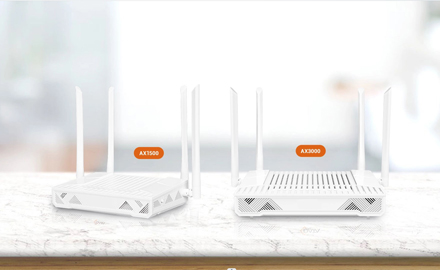The acronyms ONU (Optical Network Unit) and ONT (Optical Network Terminal) are both crucial components in Passive Optical Network (PON) architecture, a technology widely used in fiber-optic communication networks to deliver broadband services to end-users. While ONU and ONT are often used interchangeably, they have subtle differences in their roles and functions within the network.

At a fundamental level, both ONUs and ONTs serve as the customer premises equipment (CPE) in a PON system, facilitating the connection between the user's devices and the optical fiber infrastructure. However, their specific applications and functionalities can vary based on the context and the type of PON architecture being employed.
1. Common Characteristics:
- Fiber Connectivity: Both ONUs and ONTs are designed to interface with optical fibers, receiving and transmitting data through these high-bandwidth channels.
- User Connection: They provide the interface for end-users to connect their devices, such as computers, phones, or routers, to the PON network.
2. ONU (Optical Network Unit):
- General Term: ONU is a broader term that encompasses various optical network devices used in PONs.
- Broad Usage: ONUs can refer to a range of optical network devices, including those used in Gigabit Passive Optical Networks (GPON) and other PON variants.
- Functionality: ONUs typically focus on converting optical signals into electrical signals at the customer premises. They handle the modulation and demodulation of signals, ensuring compatibility between the optical network and user devices.
- Example Scenario: In a GPON environment, an ONU might include a modem-like device that connects to the optical network and provides Ethernet or other interfaces for end-user devices.
3. ONT (Optical Network Terminal):
- Specific Term: ONT is a more specific term and is often associated with ITU-T G.984 GPON standard.
- GPON Standard: ONTs strictly adhere to the GPON standard, which specifies the protocols and procedures for communication in Gigabit Passive Optical Networks.
- Functionality: ONTs typically have additional features beyond basic signal conversion. They may include routing, switching, and other networking functionalities, providing a more comprehensive solution for end-users.
- Example Scenario: In a GPON deployment, an ONT could function as a device that not only converts optical signals but also serves as a router, managing data traffic within the customer's premises.
In summary, while the terms ONU and ONT are often used interchangeably, the distinction lies in the specificity of their roles and the standards they adhere to. ONU is a more general term that encompasses various optical network devices, whereas ONT is a specific term associated with the GPON standard. In practical terms, the choice between ONU and ONT depends on the specific requirements of the PON architecture being deployed and the desired functionalities at the customer premises.
 The Difference Between AX1800 ONU and AX3000 ONU
The Difference Between AX1800 ONU and AX3000 ONU
 How are Huawei OLTs Classified?
How are Huawei OLTs Classified?
 The Future Trend of Optical Line Terminals (OLTs)
The Future Trend of Optical Line Terminals (OLTs)
 The Difference Between ONU and ONT
The Difference Between ONU and ONT